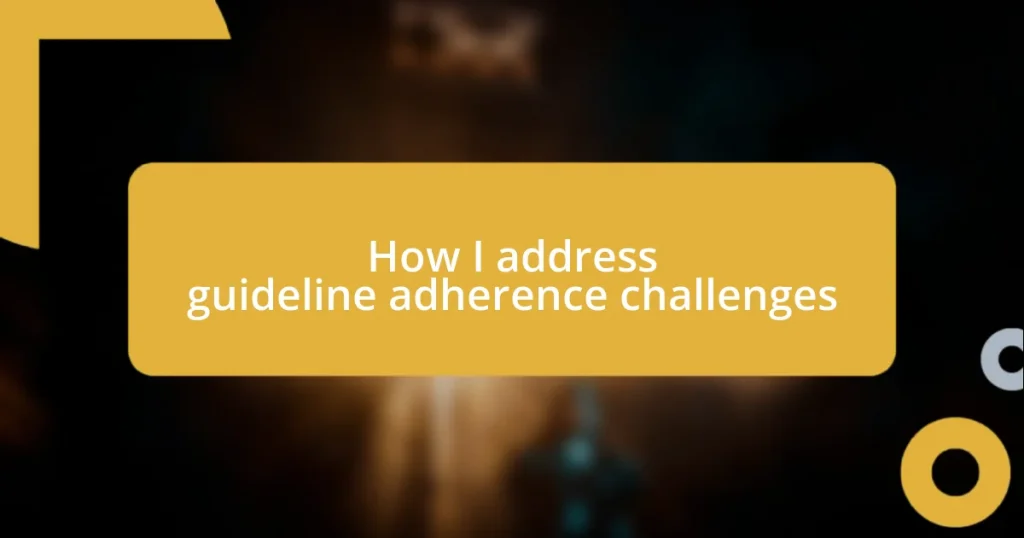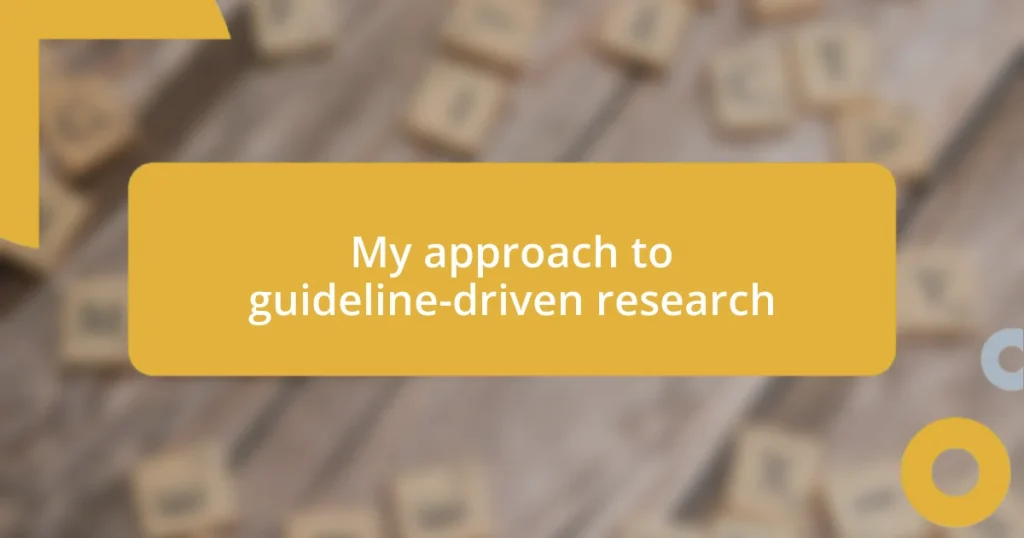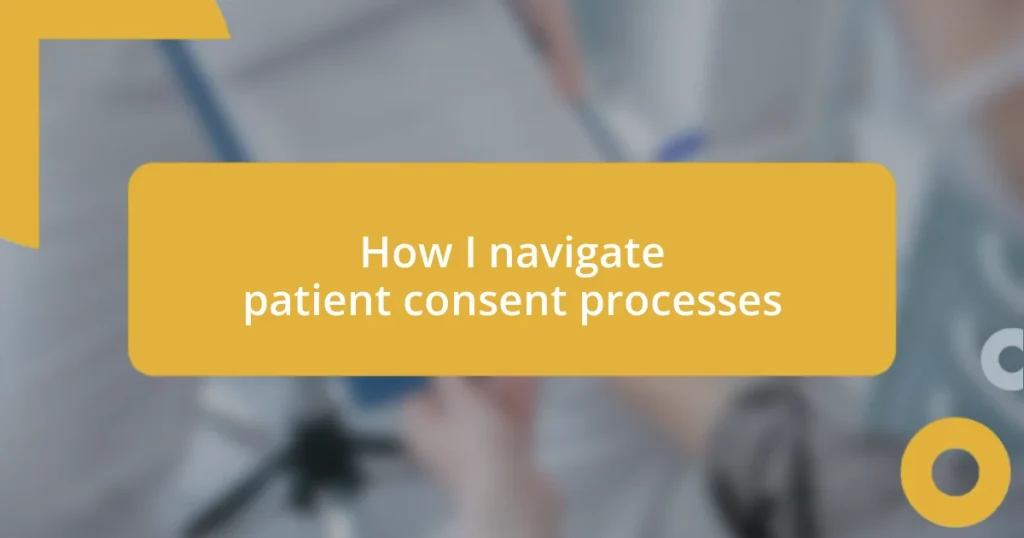Key takeaways:
- Emotional and communication barriers significantly impact guideline adherence; fostering open dialogue and simplifying guidelines are crucial for improving compliance.
- Engaging stakeholders in the adherence process enhances commitment and fosters innovation, as collaborative approaches can lead to co-created solutions.
- Continuous monitoring, iterative feedback, and sharing best practices through storytelling promote a culture of accountability and collective improvement in adherence efforts.
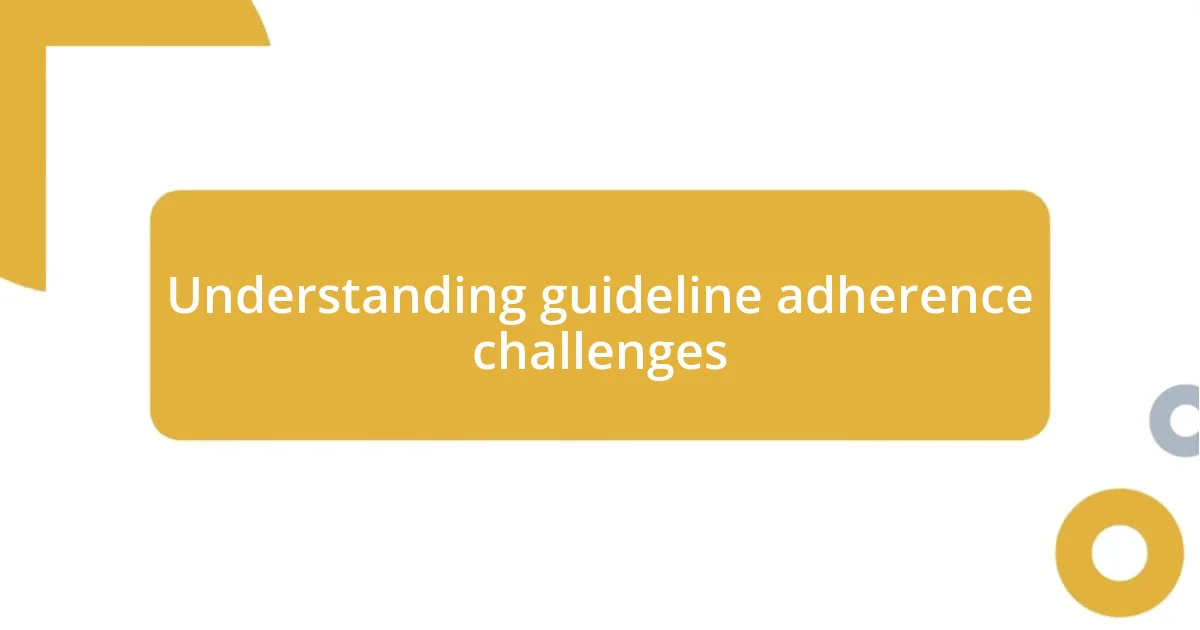
Understanding guideline adherence challenges
Understanding guideline adherence challenges involves delving into the real-life complexities that often obstruct compliance. I remember a particularly challenging case where a clinician genuinely believed they were following guidelines, yet subtle misinterpretations led to significant deviations. It made me wonder: how often do our assumptions about guidelines cloud our judgment?
These challenges are not just about understanding the written word; they are deeply rooted in our individual experiences and perceptions. I once encountered a situation where a colleague felt overwhelmed by the sheer volume of guidelines, leading to frustration rather than adherence. It begs the question: how can we transform an overwhelming set of directives into clear, actionable steps that inspire rather than burden?
Moreover, emotional factors like fear of judgment or uncertainty can play a detrimental role in adherence. I’ve seen healthcare professionals second-guess their decisions due to internal pressures, impacting their confidence. Have you ever felt that way? Recognizing these emotional barriers is essential; they often mold our actions more than we realize.
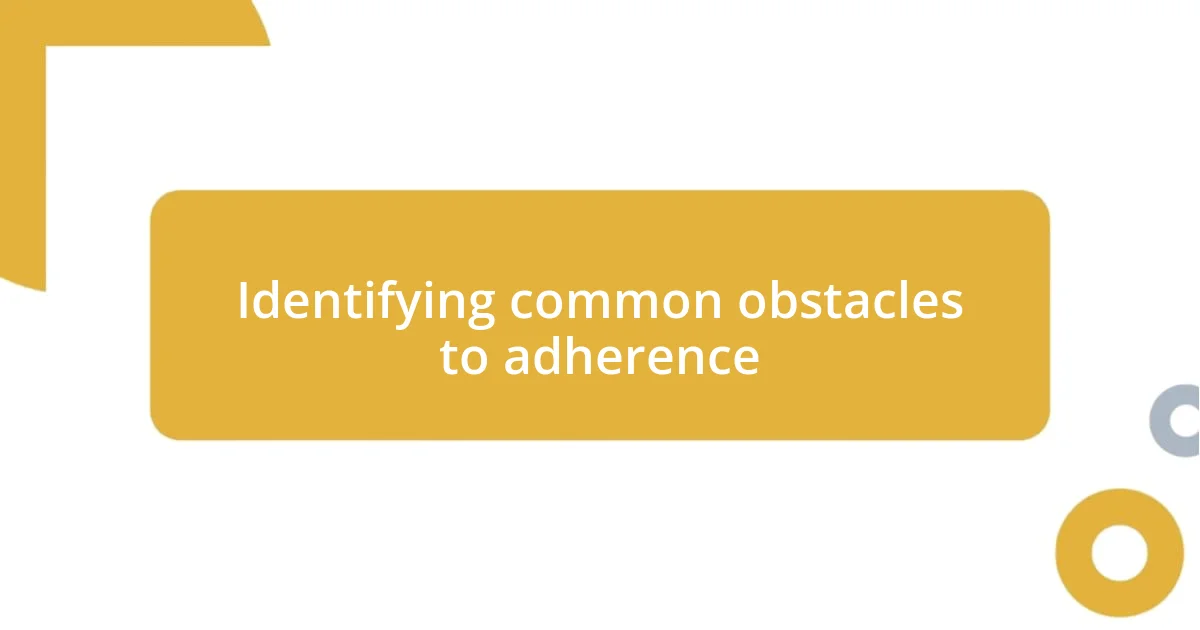
Identifying common obstacles to adherence
One of the most common obstacles to adherence I’ve observed is miscommunication among team members. For instance, I remember working in a multidisciplinary team where differing interpretations of the same guideline created a rift in patient care. Conversations became tangled, and instead of working in harmony, we found ourselves following divergent paths. This experience highlighted how essential it is to foster open dialogue and clarify expectations to ensure everyone is truly on the same page.
Additional obstacles can include:
- Lack of training: Professionals may not fully understand the guidelines due to inadequate training.
- Competing priorities: Day-to-day pressures can sideline the importance of adherence.
- Habitual practices: Old habits die hard, making it tough to adopt new guidelines.
- Resource limitations: Sometimes, there isn’t enough time or support to implement guidelines effectively.
- Skepticism: A lack of trust in the guidelines themselves can breed resistance among team members.
These barriers often intertwine, creating a complex web that can be difficult to navigate. Acknowledging their existence is the first step to breaking down these walls.
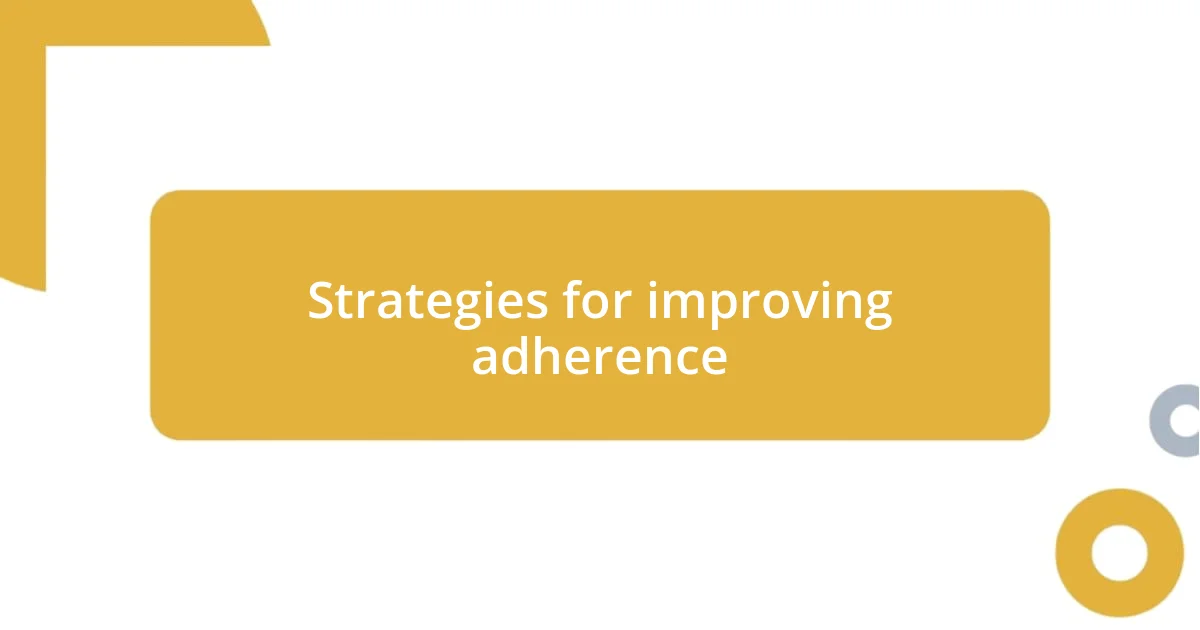
Strategies for improving adherence
To enhance adherence, one effective strategy I’ve found is prioritizing communication within teams. In a previous project, we held regular check-ins where everyone could voice their interpretations of the guidelines. This open forum not only clarified misunderstandings but also fostered a sense of unity. It was refreshing to see colleagues feel empowered to share concerns, ultimately leading to greater adherence.
Another approach involves simplifying the guidelines into actionable steps. I once guided a team through creating a visual flowchart that outlined key points. This tool made it easier for everyone to grasp the essentials and reduced confusion. It’s amazing how breaking down complex information can eliminate barriers to adherence.
Additionally, providing continuous education and training opportunities can make a significant difference. When I attended a workshop that revisited fundamental guidelines, it rekindled my enthusiasm for compliance. It reminded me how essential ongoing learning can be, helping us stay engaged and motivated to apply what we learn daily.
| Strategy | Description |
|---|---|
| Improve Communication | Foster open dialogue through regular team check-ins to clarify interpretations. |
| Simplify Guidelines | Create visual tools that break down guidelines into actionable steps, enhancing understanding. |
| Continuous Education | Encourage workshops and training sessions to keep the guidelines fresh and engaging for all team members. |
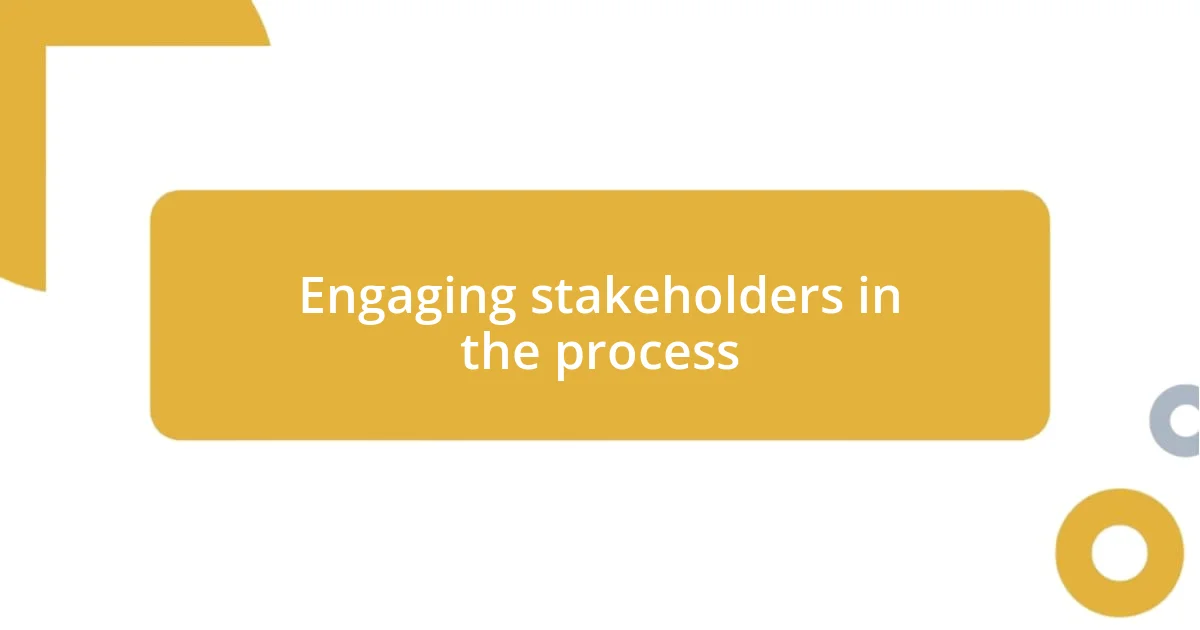
Engaging stakeholders in the process
Engaging stakeholders in the process is crucial for navigating adherence challenges. During one project, I organized a brainstorming session where diverse stakeholders came together to discuss their perspectives on the guidelines. The conversations flowed freely, turning what could have been a dry meeting into a vibrant exchange of insights. I remember feeling a genuine sense of excitement as we all worked towards a common goal, which deepened our commitment to the guidelines.
When stakeholders feel involved in the process, it’s amazing how much more invested they become. I recall a time when I shared my frustrations about long-standing practices that clashed with new guidelines. Instead of simply pushing for adherence, I sought input on how we could adapt the guidelines to fit our existing workflows. This collaborative approach not only eased resistance but also fostered innovation—how often do we get the chance to co-create solutions with those we work alongside?
One of the most powerful moments was when a particularly skeptical team member expressed their doubts about the guidelines. Rather than dismissing their concerns, I took the opportunity to turn it into a dialogue. We explored their reservations together, which opened the door to trust and understanding. In my experience, it’s these genuine conversations that can truly transform how stakeholders engage with adherence initiatives. Don’t you think that when everyone feels heard, the journey toward compliance becomes a shared and meaningful endeavor?
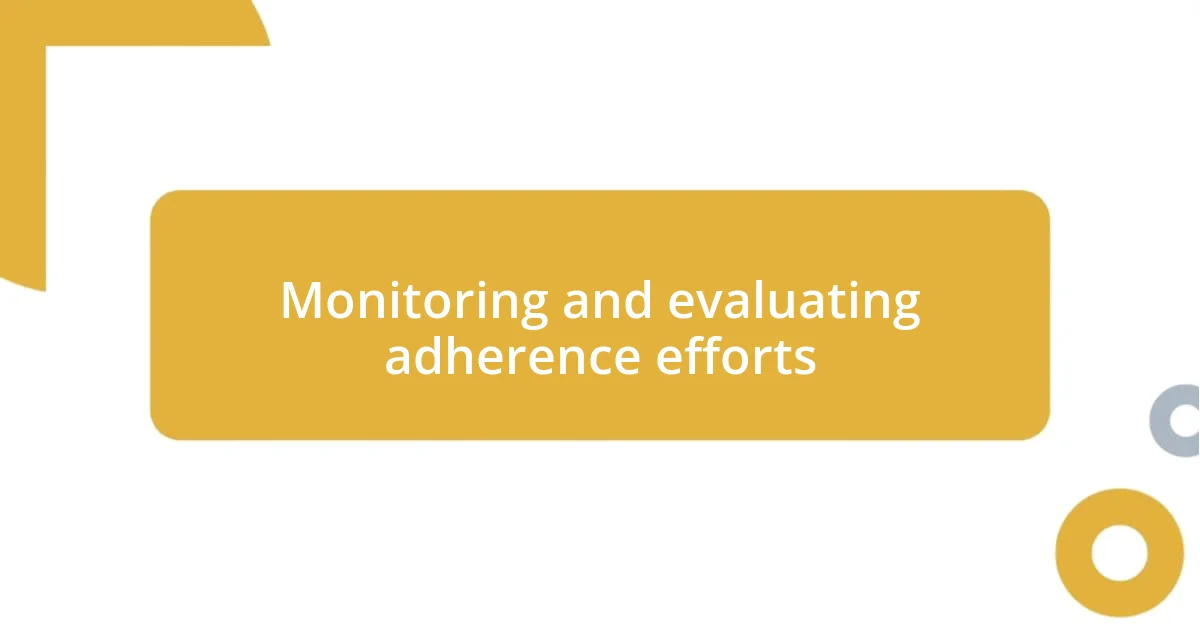
Monitoring and evaluating adherence efforts
Monitoring and evaluating adherence efforts requires a structured approach to ensure effectiveness. I find it helpful to utilize data collection methods, like surveys and feedback forms, to gauge how well our guidelines are being followed. In one instance, after implementing a new set of practices, we distributed a brief survey that revealed key areas of confusion—data that was invaluable in shaping our next steps. Isn’t it fascinating how small insights can lead to significant improvements?
I also emphasize the importance of regular performance reviews. Personally, I’ve seen the impact of setting specific metrics for adherence, which provides a concrete basis for evaluation. When I was part of a project team that tracked compliance through weekly reports, we were able to celebrate the wins and address any setbacks promptly. This kind of accountability kept everyone engaged and motivated, creating a culture where adherence wasn’t just a goal but a shared responsibility.
Moreover, sharing results with the whole team can weave a narrative of progress and purpose. One time, during a team meeting, I presented our adherence statistics alongside some qualitative feedback from stakeholders. The combination of numbers and personal stories truly energized the team. I often wonder, how much more inspired would we feel if everyone understood the direct impact of their efforts? It’s these moments of connection that not only highlight our achievements but also reinforce the ongoing journey of adherence.
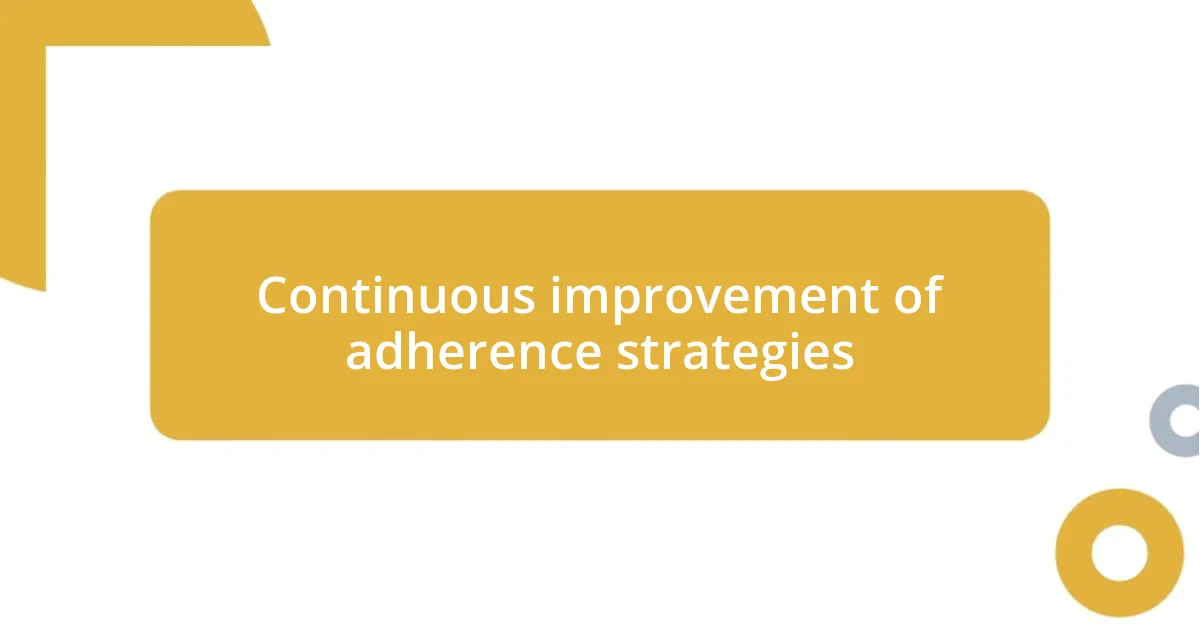
Continuous improvement of adherence strategies
Continuous improvement of adherence strategies is a dynamic process that thrives on experimentation and feedback. I vividly remember a time when I proposed a shift in our approach by piloting different adherence tactics. It was exhilarating to witness firsthand how even minor adjustments—like altering communication frequency—yielded significant engagement from the team. Have you ever noticed how small tweaks can create ripples of change?
In my experience, fostering a culture of open dialogue about what’s working and what isn’t is paramount. I organized a session focused on “lessons learned” where every team member shared their journey with adherence. I was amazed at how openly people discussed their challenges; it felt like a weight was lifted. The collective wisdom that emerged not only highlighted areas for improvement but also reinforced that we were all in this together. Isn’t it encouraging to realize that vulnerabilities can lead to collective strength?
Moreover, I’ve found that implementing iterative feedback loops can refine our strategies impressively. Take, for example, a project where we integrated monthly check-ins to assess adherence experiences. After a few rounds, we could clearly identify trends and adjust our strategies accordingly. The sense of agility we gained was invigorating—don’t you think it’s empowering to adapt continually and respond to the needs of the team? This approach not only enhanced compliance but also fostered a sense of ownership among team members, transforming adherence from a task into a shared journey.
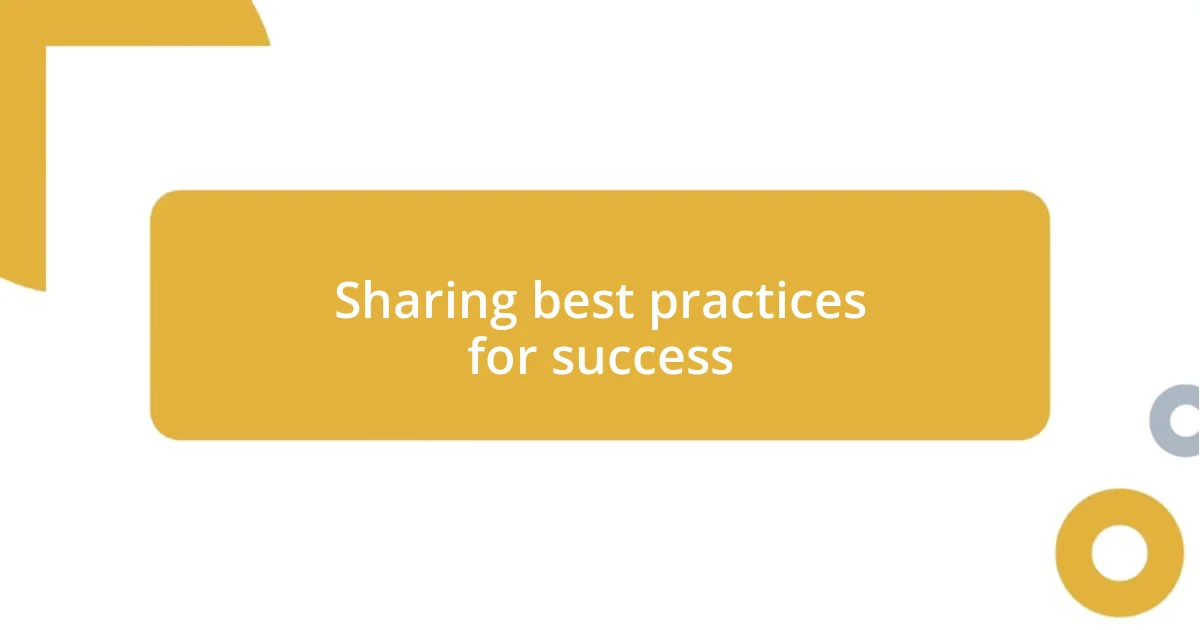
Sharing best practices for success
Sharing best practices for success in adherence requires consistent communication and collaborative brainstorming. I remember a particularly engaging workshop I facilitated, where team members shared their personal tricks for keeping on track with guidelines. The room buzzed with ideas; it was eye-opening to see how creative approaches, like using visual reminders or gamification, sparked enthusiasm. Have you ever been part of a discussion where a simple idea from a colleague dramatically changed your perspective? Those moments of revelation can truly ignite passion within the team.
Another effective strategy I’ve discovered is the power of storytelling in our adherence updates. In one project, I encouraged team members to share their “a-ha” moment related to guideline adherence during our weekly check-ins. Hearing their stories made the data come alive. It dawned on me how narratives can bridge the gap between numbers and real-world applications. Don’t you feel more connected to goals when you can relate them to someone’s experience? This approach not only humanized our adherence efforts but built a stronger sense of community.
Additionally, I firmly believe in the value of small, informal sessions dedicated to sharing best practices. One such gathering I organized turned out to be immensely beneficial. Over coffee, we discussed challenges and celebrated victories without any formal hierarchy. This relaxed environment encouraged honest feedback and creative solutions that might not have surfaced in a stern meeting. Isn’t it refreshing to foster connections that lead to enhanced collaboration? Those informal moments can often result in the most impactful breakthroughs, enhancing our adherence strategies in unforeseen ways.










